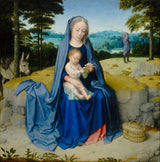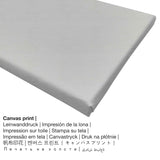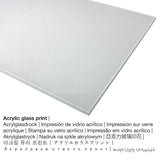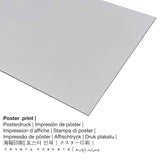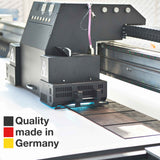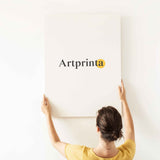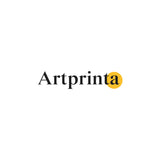Gerard David, 1510 - Ndị fọdụrụ na ụgbọ elu n'Ijipt - mbipụta nka mara mma
Ụtụ gụnyere. Mbupu gbakọrọ na ndenye ọpụpụ.
Nkọwapụta ngwaahịa nka
Ihe osise a nwere aha Ndị fọdụrụ na ụgbọ elu banye Egypt e sere ya n'ebe ugwu renaissance master Gerard David in 1510. The masterpiece was painted with the size: 44,3 x 44,9 cm (17 7/16 x 17 11/16 na). Oil on panel was used by the European painter as the technique for the work of art. Besides, this piece of art is in the the National Gallery of Art's collection, which is the museum of the US-American nation that preserves, collects, exhibits, and fosters an understanding of works of art. The nka ochie ọrụ nka, nke bụ nke ngalaba ọha is being provided with courtesy of National Gallery of Art, Washington.In addition to that, the artwork has the following creditline: . The alignment of the digital reproduction is in square format ya na oke nke 1: 1, which means that the length is equal to the width. Gerard David was a male artist, illuminator, painter, drawer, miniaturist from the Netherlands, whose style was mainly Northern Renaissance. The painter lived for 63 afọ a mụrụ na 1460 in Oudewater, Utrecht province, Netherlands and deceased in the year 1523.
Additional information on the original artwork by the museum's website (© - by National Gallery of Art - www.nga.gov)
The short biblical account of the Flight into Egypt (Matt. 2:13–14) was elaborated upon by Early Christian and medieval theologians. In one of these apocryphal legends, the weary family paused during their journey after three days of travel. The Virgin longed for food, but the date–palm branches were too high for Joseph to pick any fruit. Thereupon Jesus commanded the tree to lower its branches. David deemphasized this miracle by giving Joseph a sturdy stick and by replacing the date palm with a Flemish chestnut tree, but a sixteenth–century audience would have remembered the apocryphal story. There are also indications of the special significance of the family: the Madonna wears robes in her symbolic colors of red and blue; fine rays of golden light emanate from the mother's head and that of the child; and the bunch of grapes held by the Madonna is a well–known symbol of the Eucharist.
David created a mood of calm equilibrium. The Madonna and Child are centrally placed, while receding diagonals and alternating bands of light and dark skillfully lead back into the landscape and harmoniously relate the figures to their surroundings. The predominance of the restful color blue throughout the composition unifies the work. All in all, The Rest on the Flight into Egypt is one of Gerard David's loveliest and most peaceful creations.
[Isi mmalite: NGA]
Note by the contributor, Emily Wilkinson: This painting depicts the apocryphal scene of the Rest on the Flight to Egypt. The holy family pause to recover on their journey. Mary, in virginal blue, is in the foreground with the infant Christ. In the background Joseph harvests chestnuts for food.
Ozi nka ahaziri
| Aha nke ọrụ nka: | "Ndị fọdụrụ na ụgbọ elu n'Ijipt" |
| Nhazi: | sere |
| Otu izugbe: | nka ochie |
| Narị afọ nka: | 16th narị afọ |
| Afọ nka: | 1510 |
| Afọ nka: | ihe karịrị 510 afọ |
| Ọkara nke ihe osise izizi: | mmanụ na panel |
| Akụkụ izizi nka: | 44,3 x 44,9 cm (17 7/16 x 17 11/16 na) |
| Egosiputara na: | Nnukwu osisi nke Art |
| Ebe ebe ngosi nka: | Washington DC, Njikota Obodo Amerika |
| URL webụ: | Nnukwu osisi nke Art |
| Licensedị ikike: | ngalaba ọha |
| Site n'aka: | National Gallery of Art, Washington |
Tebụl nchịkọta ihe nkiri
| Ihe nkiri: | Gerard david |
| A makwaara dịka: | gheeraert david, david gerard, Davit Gheeraedt, Davidt Gerard, David Gheeraedt, David Gerard, Davidt Gheeraedt, Davit Gerard, David, Davidt Gherat, Davidt Gheeraert, David Gheeraert, David Gherat, Gerard David, Davit Gherat, Davit Gheeraert |
| Gender: | nwoke |
| Obodo onye nka: | Dutch |
| Ọrụ: | artist, miniaturist, painter, drawer, illuminator |
| Obodo obibi: | mba netherland |
| Otu nka: | nna ukwu ochie |
| Ụdị nka: | Northern Renaissance |
| Nwụrụ na afọ nke: | 63 afọ |
| Afọ ọmụmụ: | 1460 |
| Obodo: | Oudewater, mpaghara Utrecht, Netherlands |
| Nwụrụ n'afọ: | 1523 |
| Nwuru na (ebe): | Bruges, West-Vlaanderen, Flanders, Belgium |
Họrọ ihe kacha amasị gị
N'ime ndetu ndetu ngwaahịa ị nwere ike họrọ ihe na nha masịrị gị. Anyị na-ahapụ gị ka ịhọrọ nha na akụrụngwa ọkacha mmasị gị n'etiti nhọrọ nhazi ngwaahịa ndị a:
- Mbipụta nke aluminom: Aluminium Dibond prints are prints on metal with a true effect of depth. The white and bright components of the original artpiece shimmer with a silky gloss but without any glow. Colors are bright and luminous, the fine details of the print are crisp. This direct print on aluminium is the most popular entry-level product and is a truly modern way to display art prints, because it draws attention on the whole artwork.
- Kwaaji: A canvas print is a printed canvas stretched on a wooden stretcher. A canvas generates a typical impression of three dimensionality. Canvas prints are relatively low in weight. That means, it is easy to hang the Canvas print without the support of extra wall-mounts. Hence, a canvas print is suited for any kind of wall.
- Akwụkwọ mmado ebipụtara (akwa akwa akwa): Our poster print is a UV printed canvas paper with a granular texture on the surface, that resembles the actual masterpiece. Please note, that depending on the size of the poster print we add a white margin between 2 - 6cm round about the artwork in order to facilitate the framing.
- Bipụta na enyo acrylic: The print on acrylic glass, often labelled as a plexiglass print, makes the original into stunning wall décor and makes a great alternative to dibond or canvas fine art prints. The work of art is being manufactured with state-of-the-art UV direct printing machines. It creates vibrant and impressive colors. With an acrylic glass art print sharp contrasts and small color details become identifiable because of the very subtle tonal gradation.
Ngwaahịa a
| Bipụta ngwaahịa: | ezi nka mmeputakwa |
| Usoro mmeputakwa: | dijitalụ mmeputakwa |
| Usoro mmepụta: | Mbipụta UV ozugbo (mbipụta dijitalụ) |
| Ihe ngosi: | Germany |
| Stockdị ngwaahịa: | na mmepụta ihe |
| Ngwaahịa were: | mgbidi mma, art ebipụta gallery |
| Ndepụta: | nhazi square |
| Oke akụkụ onyonyo: | ( Ogologo: obosara) 1: 1 |
| Mmetụta nke akụkụ akụkụ: | ogologo ya na obosara |
| Ụdị ngwaahịa dị iche iche: | akwụkwọ mmado (akwụkwọ kwaaji), mbipụta enyo acrylic (nke nwere ezigbo mkpuchi iko), mbipụta ọla (aluminium dibond), mbipụta kwaaji |
| Canvas dị n'elu ihe nrịbama (mbipụta kanvas) nha dị iche iche: | 20x20cm - 8x8 ", 30x30cm - 12x12", 50x50cm - 20x20", 70x70cm - 28x28", 100x100cm - 39x39", 150x150cm - 59x59", 180-x180cm |
| Mpempe iko acrylic (nwere ezigbo mkpuchi iko) nha: | 20x20cm - 8x8", 30x30cm - 12x12", 50x50cm - 20x20", 70x70cm - 28x28", 100x100cm - 39x39" |
| Nhọrọ nha nke akwụkwọ mmado (akwụkwọ kwaaji): | 30x30cm - 12x12", 50x50cm - 20x20", 70x70cm - 28x28", 100x100cm - 39x39" |
| Nhọrọ nha nha nke Dibond (ihe alumnium): | 20x20cm - 8x8", 30x30cm - 12x12", 50x50cm - 20x20", 70x70cm - 28x28", 100x100cm - 39x39" |
| Igwe onyonyo: | mmeputakwa na-enweghị isi |
Ihe dị mkpa: We try whatever we can to depict the art products as precisely as possible and to demonstrate them visually in our shop. Nonetheless, the pigments of the print materials, as well as the print result may differ to a certain extent from the image on the device's monitor. Depending on the screen settings and the quality of the surface, color pigments can unfortunately not be printed 100% realistically. Given that all our fine art prints are processed and printed by hand, there might also be slight differences in the exact position and the size of the motif.
© nwebiisinka site na - www.artprinta.com (Artprinta)

